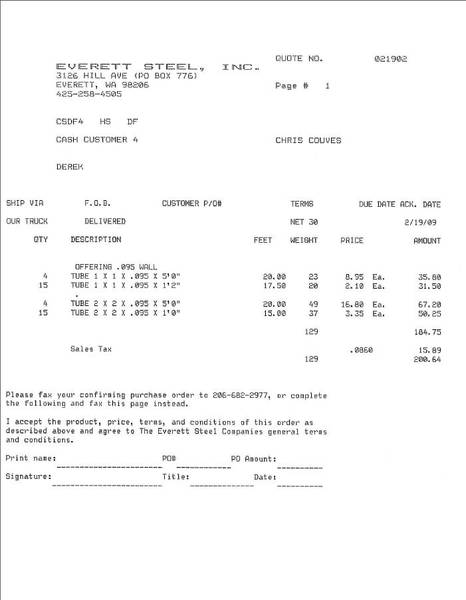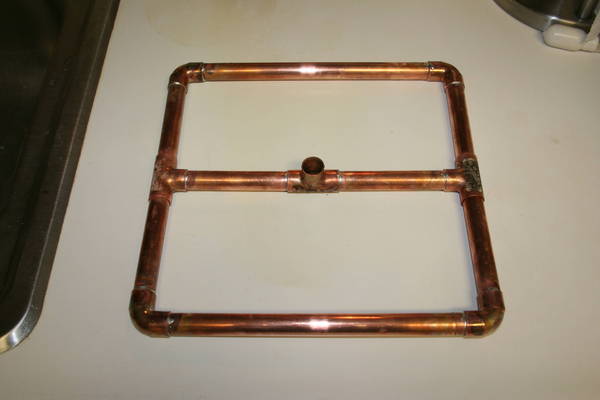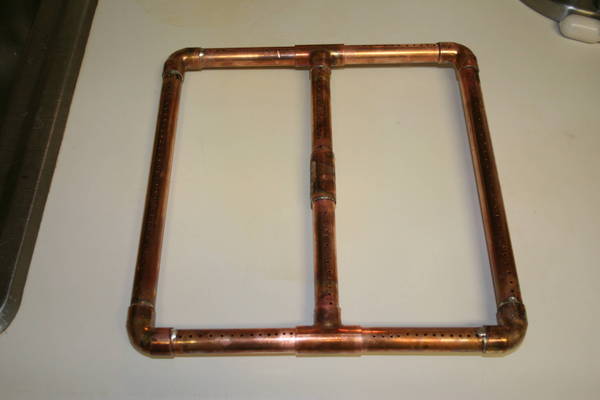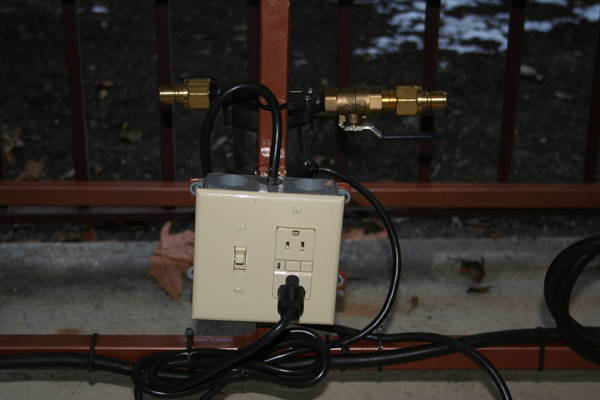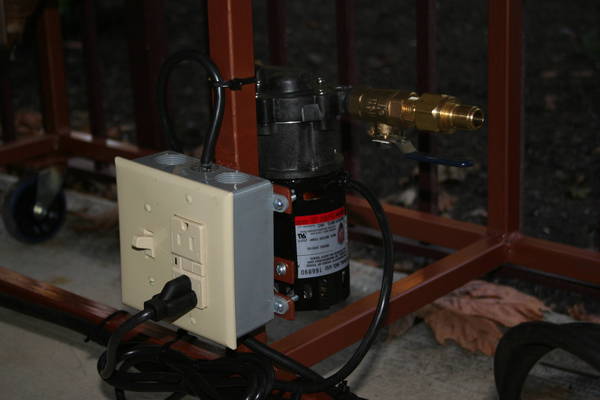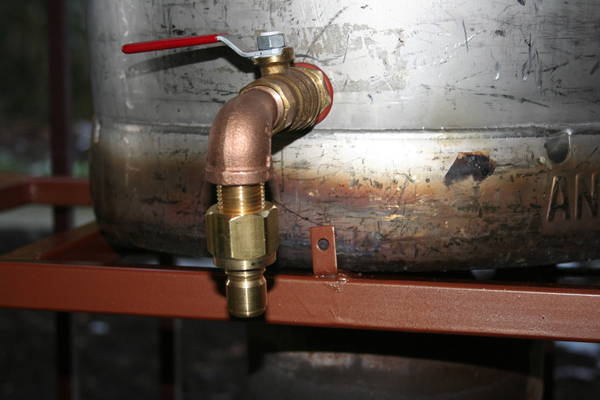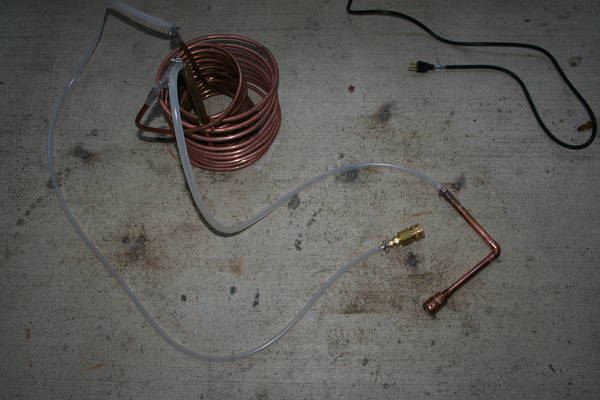CFCs (and plate chillers for that matter) work so well because a very small volume of wort is met with a small volume of cold coolant (which is constantly being refreshed). The "counterflow" is the key. When the 212F wort hits the chiller, it's met with coolant at about 150F. You'd think that doesn't do much good but you still have a 62F delta there. Obviously the further down the coil you get the cooler the wort will become as it encounters colder and colder coolant. All the way at the wort's exit end, the coolant it encounters is whatever your tap is, say 65F.
You very well might get it to cool in one pass but again, it's going to take a lot of ice to keep the water cold and you have to stir it big time because the water near the coils is going to heat quickly.
You very well might get it to cool in one pass but again, it's going to take a lot of ice to keep the water cold and you have to stir it big time because the water near the coils is going to heat quickly.


























































![Craft A Brew - Safale S-04 Dry Yeast - Fermentis - English Ale Dry Yeast - For English and American Ales and Hard Apple Ciders - Ingredients for Home Brewing - Beer Making Supplies - [1 Pack]](https://m.media-amazon.com/images/I/41fVGNh6JfL._SL500_.jpg)



